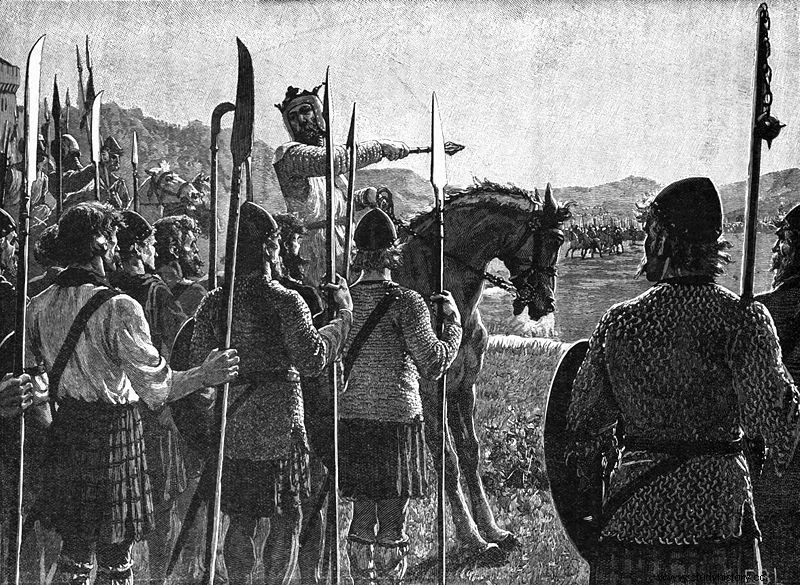Thanks to Braveheart , winner of the Oscar for Best Picture, which Mel Gibson directed, produced and starred in, we all know the Scottish national hero William Wallace . The film, with abundant artistic licenses and some historical overtones, is based on the epic poem «The Actes and Deidis of the Illustre and Vallyeant Campioun Schir William Wallace » written by Blind Harry around 1470 and later became popular with the adaptation of the poet William Hamilton in 1722. From the historical William Wallace we know that he was a commoner with some education, who rose up against the English occupation, defeated them in 1297 at the battle of Stirling Bridge – Andrew Moray died here, another hero who fought alongside William Wallace from the beginning and that the film forgets -, who the following year would be defeated by Edward I at the battle of Falkirk and that after returning from France he was captured and quartered. End of the historical Wallace… and of the film. And here, as the film ends, the legend of the true Braveheart begins. … Robert Bruce .

Robert Bruce in Bannockburn
Where did this legend originate and why Robert Bruce?
After a guerrilla war against the English, and after being crowned King of Scotland as Robert I , he led the Scots to defeat Edward II at the Battle of Bannockburn in 1314. Scotland's victory was complete and although full recognition of Scottish independence was not achieved until 1328 with the signing of the Treaty of Edinburgh-Northampton , Robert the Bruce's position as king had been strengthened. In a short time he was able to enjoy such a precious treasure... a year later he died. On his deathbed, it is not known whether as penance for all his sins or for not having been able to fulfill his desire to fight in a crusade, he forced Sir James Douglas to swear that at the moment he died he would uproot his heart and take it to the Holy Land... As Robert Bruce's body was laid to rest at Dunfermline Abbey (in 1818 his body was exhumed and it was discovered that his ribs had been sawn off), Douglas, along with other gentlemen, left for the Holy Land... with his heart placed in a lead container and tied to a chain . Unfortunately, due to the oath taken, they could only reach the Iberian Peninsula where they participated in our crusade in Teba.
The superiority of the Muslims and the ignorance of their attack tactics surprised the Scots. At one point in the battle James Douglas was surrounded by the enemy and, faced with his imminent death, he grabbed the chain that held the container with the heart and threw it shouting:
Go ahead brave heart, I will follow you or die.

James Douglas throwing the heart
Douglas's body and Robert's heart were repatriated to Scotland for burial. Robert's heart was buried at Melrose Abbey. In 1921, during excavations at Melrose Abbey, a conical-shaped lead container was found but reburied. In 1996, it was unearthed again and the Historic Scotland said that "it was difficult to determine whether or not it was the heart of Robert Bruce «. On June 22, 1998, he was reburied in the same place. Two days later, on the anniversary of Bruce's victory at Bannockburn, the Secretary of State for Scotland discovered a carving of a heart intertwined with St Andrew's Cross at the site where the heart was buried, which reads:
"A noble heart cannot be at peace if it lacks freedom"

